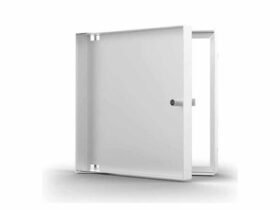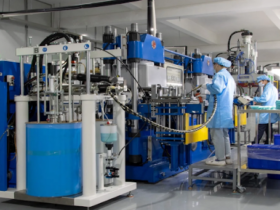The world of interior design is experiencing a transformative shift driven by rapid advancements in artificial intelligence (AI) and automation. What was once a domain dominated by human intuition, creativity, and manual labor is now being reshaped by cutting-edge technology. AI and automation are changing how we approach home decoration and revolutionizing the entire design process, making it more efficient, personalized, and accessible.
This new wave of technology offers limitless possibilities, paving the way for a future where homes are aesthetically pleasing but also intelligent, adaptive, and deeply integrated with our daily lives. As we dive into this exciting era, we must explore how AI and automation influence modern home design and what this means for homeowners and designers alike.
AI-Driven Personalization: A New Era of Customization
Another benefit of using AI in home decoration is the provision of personalized design solutions. In the past, attaining a home designed and built according to one’s specifications meant consulting with an interior designer, which was both time-consuming and costly. However, AI is making design more accessible by identifying the preferences, habits, and emotions related to different design aspects.
It can now offer specific wall colors, furniture placement, and accent pieces that complement each homeowner’s preferences. These tools draw on large databases of design trends, materials, and aesthetics, making it possible to visualize dream living spaces in real-time. By inputting simple data about their preferences and habits, homeowners can get the necessary recommendations and avoid time-consuming work.
Furthermore, the use of AI in software development means that the software will be able to learn from previous instances and improve over time. For example, if a homeowner repeatedly selects simple models, the AI will recommend similar models in the future. This level of customization is not only about the house’s outer appearance but also about the functionality of the living space and the comfort of a home. The outcome of this process is a living environment that may not only be beautiful but also efficient and adjusted to the owner’s routine.
Automation: Enhancing Efficiency and Precision in Home Decoration
While the application of AI focuses on personalization, automation has shifted the focus from home decoration to how it can be implemented. Smart lighting systems, automated window treatments, and climate control are some of the automation features that are now common in modern homes. These systems aim to provide homes that are efficient in the use of energy, comfortable, and adaptable to users.
For instance, intelligent lighting systems can control the brightness and hue of the lights depending on whether it is day or night, the task being conducted, or even the occupants’ feelings. Such a level of control improves the feel of a home and makes it suitable for different occasions. Likewise, curtains and blinds can also be operated automatically. They are scheduled to open and close at certain times, thus controlling the temperature inside the house and lowering energy costs.
Furniture manufacturing is another sector where automation is being applied in a rather drastic manner. Some of the furniture that can be controlled and modified through automation include adjustable beds, motorized recliner chairs, and height-adjustable desks. These innovations not only help to make a space more comfortable but also help with the overall design of a home by providing furniture pieces with clean lines and contemporary looks that can blend in with other design schemes.
In addition, home decoration is no exception when it comes to construction and assembly with automation. Robotic systems make it easier to paint walls, assemble furniture, and install fixtures, as they are done with higher accuracy and within the shortest time possible. This makes the work precise and accurate to the intended design plan, hence reducing the number of mistakes that might be made in the process.
The Impact on Homeowners and Designers
The use of AI and automation in home decoration is changing the relationship between homeowners and interior designers. To homeowners, these technologies provide more opportunities to participate in the design process and have more influence on their homes. The availability of AI-powered tools makes it possible for anyone to undertake a home decoration project without being an expert.
AI and automation are both a threat and opportunity for interior designers. On the one hand, it can make some aspects of the design process more accessible and free up time for the designer to work on more challenging aspects. On the other hand, the emergence of AI design tools may cause problems with job displacement in the future. However, it is essential to remember that AI can help in idea generation and task completion, but the human factor is still vital in the design world. A certain level of empathy is required to listen to a client’s needs and emotional state and then be able to put that into a design that cannot be replaced by AI, at least not at the current stage.
Conclusion
As AI and automation technologies progress, so will their influence on home decoration and design. These technologies are not just tools; they are enablers of the new age of designing homes that are personalized, efficient, and responsive to the requirements of their inhabitants.
The future of home decoration is one where technology and design merge and provide a world of unlimited innovation, where homes are as smart as they are aesthetically appealing. For the homeowner who wants to create a new look and feel of their home or the designer who wants to be at par with the current trending home designs, it is imperative to incorporate AI and automation in the design process.














Leave a Reply